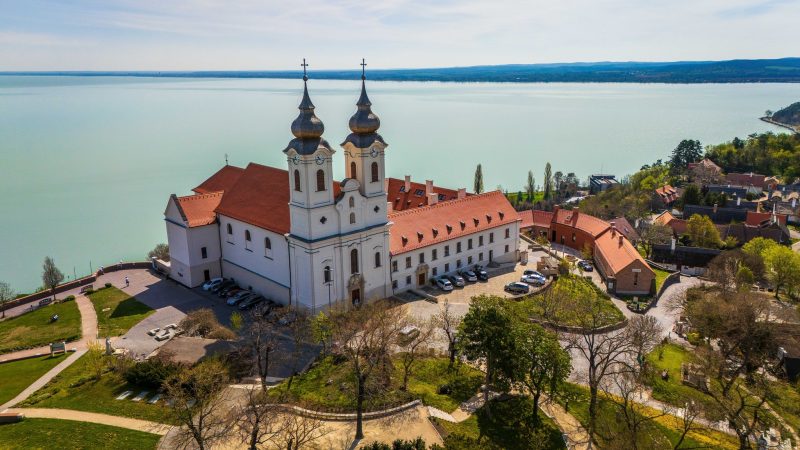Over the past six years, one of Hungary’s most complex and large-scale heritage renovations has taken place at the Benedictine Abbey of Tihany. The iconic twin-towered Baroque church overlooking Lake Balaton, along with its adjoining monastery, has undergone not only architectural renewal, but also entered a new chapter in its spiritual and communal functions. The full-scale design was led by Paulinyi & Partners.
The renovation went far beyond aesthetic improvements: the primary goals were the preservation of historical values, ensuring uninterrupted monastic life, and adapting the building for 21st-century functionality.
“Renovating a living, functioning abbey without disrupting monastic life is a unique design challenge. Aligning historical, spiritual, and functional layers demanded extraordinary sensitivity. The dialogue between past and present was our guiding principle,” said István Vámossy, founding partner and project director of Paulinyi & Partners.
The comprehensive project included the modernization of the church, monastery, roofing structures, interior spaces, and the entire mechanical infrastructure.
“The combination of traditional materials with modern technologies and structures creates a contemporary appearance and transparency, while respecting the unique character of the Baroque buildings. This architectural dialogue ensures that the extension is both innovative and timeless, enriching the building complex of the Tihany Benedictine Abbey in a fitting manner,” said Dr. Gergely Paulinyi DLA, CEO of Paulinyi & Partners.
The preparation phase relied on extensive historical research, 3D point cloud surveys, and heritage diagnostics to ensure that all interventions were both authentic and professionally grounded. Throughout the construction process, community and liturgical life continued uninterrupted, delivering an uncommon and challenging feat in architecture.
This project stands as a compelling example of how historical buildings can be not only preserved but reinterpreted - creating living, functional spaces that align the values of the past with the needs of the future.
More in-depth insights and behind-the-scenes details can be found in the full interview published on Hely.hu.
Links
